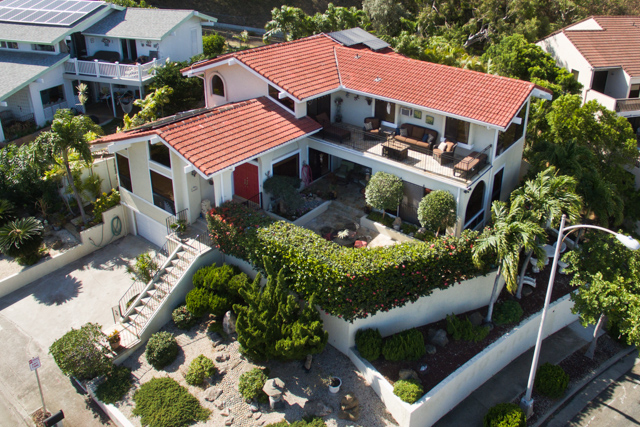In any heavily populated area, there is enough activity going on at once during the day to generate all kinds of sounds across the audible spectrum of human hearing. Planes take off and land, traffic moves along roadways, construction crews repair roads, dogs bark, music blares, sirens sound, lawns are mowed, etc. Even within a building, mechanical noise from heating or air conditioning can be audible, phones ring, and voices, radios and TVs are heard through walls, and so on. We rely on construction practices and materials to provide a sufficient barrier from the loud goings-on that surround us every day. Inspectors may be interested to learn how building materials and techniques influence the transmission of sound.
How Sound Moves
Sound energy travels from a source through air, water and solid objects. When sound waves hit the eardrum and cause vibration, we perceive them through our sense of hearing. The path a sound takes before it reaches our ears can be either airborne or structure-borne. Airborne sounds are radiated from a source directly into the air, such as a loud jackhammer. Structure-borne sound is sound that travels through solid materials before we hear it. An example would be heavy footsteps audible from the next room. This is why structure-borne sound is often referred to as “impact noise.” Sound waves radiate around the source and decrease in loudness as they travel farther away. The energy of a sound wave is reduced by half when the distance from the source doubles.
Sound has three properties: frequency, wavelength and amplitude. Frequency is the number of cycles per second the sound wave itself produces, and it determines the pitch of the sound we hear. Frequency is measured in hertz.  The range of human hearing goes from 16 to 20,000 Hz, with 16 being the lowest detectable pitch, and 20,000 the highest. Wavelength is the distance between the start and the end of a sound wave cycle. Amplitude is the perceived loudness of the sound.
The range of human hearing goes from 16 to 20,000 Hz, with 16 being the lowest detectable pitch, and 20,000 the highest. Wavelength is the distance between the start and the end of a sound wave cycle. Amplitude is the perceived loudness of the sound.
Systems of amplitude measurement have been developed in order to quantify sound objectively. When amplitude is measured, it is actually the pressure of a sound wave striking a surface that is being measured. The unit of measure is the decibel (dB). A larger vibration at the source will cause a larger sound pressure level and, thus, a greater perceived volume. The human voice is usually in the range of 55 to 60 dB, a loud truck or motorcycle is 80 to 100 dB, and a jet taking off or a gun firing is measured at 120 dB or more.
Reducing dB Levels in Buildings
There are several categories of sound control for interiors: sound absorption, airborne sound transmission, and impact-sound transmission.
Sound Absorption
Sound absorption is the capability of a surface, or building material, to absorb sound instead of reflecting it. Sound waves will continue to bounce around a room for a time after they are created if the majority of surfaces in a room is reflective. Surfaces that absorb sound better will not allow for reflections to bounce around as much, and will deaden the sound wave more quickly. Many common building materials, such as gypsum board, wood, concrete, brick and tile, are fairly reflective and do not absorb much sound. Softer materials, such as carpet, foam padding, and fiberglass insulation, are far better at absorbing sound.
The use of absorptive materials can be helpful in controlling sound. Fiberglass insulation is very absorptive and can be used where sound control is a concern. Thick carpet with padding is also very absorptive, and acoustical ceiling tiles are designed to absorb rather than reflect sound. Even in cases where these options are not viable, absorptive materials can be added to finished rooms in other ways: furniture with thick cushioning is extremely absorptive, as are thick and heavy curtains and drapes. Items such as these can be added or arranged in ways that will allow for greater sound absorption. Acoustical baffles with absorptive materials can be purchased for use in areas where sound is a major concern, and most are designed to be unobtrusive and visually nondescript so as to allow for installation without drastically altering the aesthetics of a room.
Airborne Sound Transmission
Airborne sound transmission in interiors deals with how well sound is controlled from room to room, and from the outdoors to indoors (or vice versa) through walls and ceilings. Sound transmission loss is the decrease in sound energy when it passes through a building element. Different materials provide different levels of transmission loss and, thus, different levels of diffusion of sound.
Dense, heavy materials increase the mass of floors and walls, allowing less sound to pass through. De-coupling can also be used to control sound, in this case. A break in framing or a resilient drywall connection breaks the path of vibration for the sound wave, causing it to halt. This is the most effective method for controlling strong, low frequencies, which are the hardest to block. Blocking airborne sound from leaking through gaps and cracks by sealing them is also effective.
Impact-Sound Transmission
After an impact noise is transmitted through a floor or ceiling assembly, the airborne sound that has made it through is the impact-sound transmission. The sound of someone stomping around on the floor above you is an impact sound transmitted through the ceiling to the room you are in. As with airborne sound transmission and sound absorption, the media of building materials used in construction come into play.
Wood joist floor-ceiling systems transmit a lot of impact sound. Adding fiberglass insulation will improve their capability of blocking impact sound, as will decoupling by using a wire-suspended drywall ceiling. Lightweight concrete flooring is generally good at reducing airborne sound transmission, but it does not do as well blocking impact sound. De-coupling is crucial to improving impact sound control in this instance. Resilient underlayments beneath floating floors can isolate the finished flooring from the concrete slab.
Specialty Construction Materials for Sound Control
There are a number of specialty materials available for sound control. These are designed to provide strategic advantages over traditional materials, and are designed for use in situations where controlling sound or noise levels is of great concern. Many of these materials can be used during an initial build or installed at a later date, if the situation necessitates it. Some common examples are listed here.
- Mineral-fiber insulation is a special, denser type of insulation that can be used to improve a room’s level of soundproofing. Its density is much higher compared to traditional fiberglass insulation, which makes it far more effective at stopping the
 transmission of sound from one room to another. Mineral-fiber insulation also has a much higher burning point than standard fiberglass insulation, as well as a lower rate of moisture absorption.
transmission of sound from one room to another. Mineral-fiber insulation also has a much higher burning point than standard fiberglass insulation, as well as a lower rate of moisture absorption. - Sheets of limp mass, dense vinyl sound barrier are available for covering flat surfaces. The sheets are flame-retardant, and easy to install with plastic-cap nails or staples, or one can use trowel-applied, multi-purpose vinyl flooring adhesive. They are also available with an adhesive backing for even easier installation. These coverings are safe, inexpensive, and easy to work with. They can be cut with a standard utility knife or scissors.
- Floor de-couplers can be used to “float” a floor. De-coupling a floor is an effective way to minimize sound transmission. These floaters can be placed between the existing floor and a new level of flooring installed on top of them. They are inexpensive and will allow for the additional level of flooring to be removed at a later date, returning the floor to its original state.
- Resilient channels are pieces of metal made in a special shape that gypsum board or any type of drywall can be attached to in order to minimize sound transmission. One side of the resilient channel is attached to the stud, and the drywall is attached to the other side. Drywall that is isolated from framing in this manner will transmit far less sound than drywall mounted directly to studs.
Signature Inspections Hawaii, LLC, is FULLY Insured & “NATIONALLY CERTIFIED” by InterNACHI. InterNACHI also requires inspectors to continue their education through accredited courses, conferences, online learning, etc… and annual Inspector Certificate Testing in order to hold a current certificate.
Contact Us Today || Book You Inspection Now
808.388.3425
Trevor Drinen | CPI Certified Professional Inspector # NACHI16122702
*For a more detailed explanation of the inspection process please feel free to visit: InterNACHI Residential Standards Of Practice and InterNACHI Code Of Ethics .






 transmission of sound from one room to another. Mineral-fiber insulation also has a much higher burning point than standard fiberglass insulation, as well as a lower rate of moisture absorption.
transmission of sound from one room to another. Mineral-fiber insulation also has a much higher burning point than standard fiberglass insulation, as well as a lower rate of moisture absorption.


